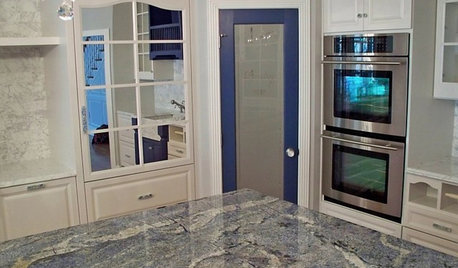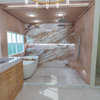Questions regarding membranes choices
piscesgirl
11 years ago
Related Stories

SELLING YOUR HOUSE15 Questions to Ask When Interviewing a Real Estate Agent
Here’s what you should find out before selecting an agent to sell your home
Full Story
WORKING WITH PROS12 Questions Your Interior Designer Should Ask You
The best decorators aren’t dictators — and they’re not mind readers either. To understand your tastes, they need this essential info
Full Story
LIGHTING5 Questions to Ask for the Best Room Lighting
Get your overhead, task and accent lighting right for decorative beauty, less eyestrain and a focus exactly where you want
Full Story
MOST POPULAR8 Questions to Ask Yourself Before Meeting With Your Designer
Thinking in advance about how you use your space will get your first design consultation off to its best start
Full Story
REMODELING GUIDESConsidering a Fixer-Upper? 15 Questions to Ask First
Learn about the hidden costs and treasures of older homes to avoid budget surprises and accidentally tossing valuable features
Full Story
REMODELING GUIDESPlanning a Kitchen Remodel? Start With These 5 Questions
Before you consider aesthetics, make sure your new kitchen will work for your cooking and entertaining style
Full Story
FEEL-GOOD HOMEThe Question That Can Make You Love Your Home More
Change your relationship with your house for the better by focusing on the answer to something designers often ask
Full Story
REMODELING GUIDES9 Hard Questions to Ask When Shopping for Stone
Learn all about stone sizes, cracks, color issues and more so problems don't chip away at your design happiness later
Full Story
EXTERIORSCurb Appeal Feeling a Little Off? Some Questions to Consider
Color, scale, proportion, trim ... 14 things to think about if your exterior is bugging you
Full Story
KITCHEN COUNTERTOPSKitchen Counters: Granite, Still a Go-to Surface Choice
Every slab of this natural stone is one of a kind — but there are things to watch for while you're admiring its unique beauty
Full Story








MongoCT
piscesgirlOriginal Author
Related Professionals
Arcadia Kitchen & Bathroom Designers · Athens Kitchen & Bathroom Remodelers · Brentwood Kitchen & Bathroom Remodelers · Camarillo Kitchen & Bathroom Remodelers · Deerfield Beach Kitchen & Bathroom Remodelers · Garden Grove Kitchen & Bathroom Remodelers · Pearl City Kitchen & Bathroom Remodelers · Walnut Creek Kitchen & Bathroom Remodelers · McDonough Glass & Shower Door Dealers · Tooele Cabinets & Cabinetry · Watauga Cabinets & Cabinetry · Huntington Beach Window Treatments · Rochester Hills Window Treatments · Sun Lakes Window Treatments · Tennessee Window TreatmentsMongoCT
piscesgirlOriginal Author
MongoCT